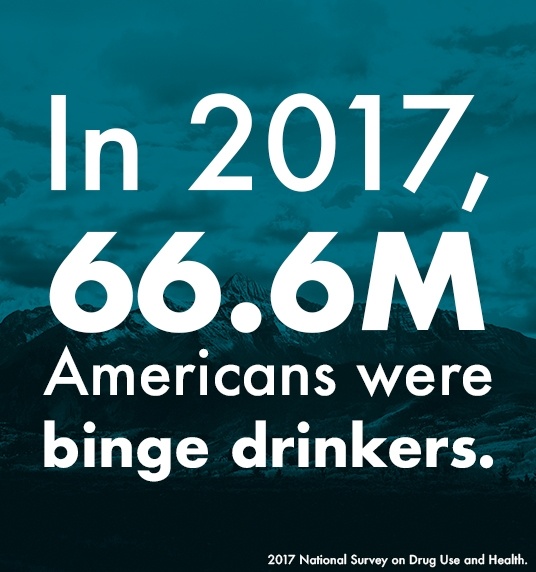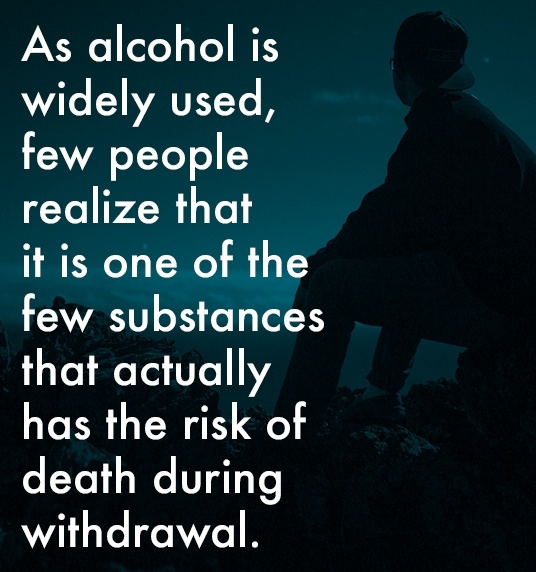What is Alcohol


Alcohol is an organic compound. Alcohol ethanol is what is found in alcoholic beverages (i.e., beer, wine, liquor, etc.), that occurs by fermenting sugar with yeast. Many people understand that alcohol is a depressant, which they tend to associate with depression. While it is a possible side effect, generally it acts as a depressant by acting as a suppressant to the central nervous system (CNS). This action is part of what calms anxiety and overexcitement in the brain for many, which is why it’s common for people to use it to feel more comfortable and confident in social situations. By depressing the CNS, it also impairs cognitive and motor function, which is why it is so dangerous to operate any vehicles or machinery when drinking. This also makes it difficult for people to think clearly the more they consume, which varies widely by person, and they might not always make the best decisions. Our alcohol detox colorado staff provide medication on abuse of drugs and alcohol.
Alcohol has been around for thousands of years, and likely close to the beginning of human existence. For National Geographic, archeologist Patrick McGovern said, “Alcohol is central to human culture and biology because we were probably drinking fermented beverages from the beginning.” Over time, attitudes toward alcohol have shifted from little understanding and regulation, to the times of prohibition, and now more relaxed attitudes again. However, while drinking is widespread and accepted, people are more aware of the potential for abuse and addiction. This has led to a decrease in drinking, with some not drinking at all, in certain demographics. Still, alcohol is pervasive, particularly in American culture, and this does make it harder to see it as a problem. After all, if so many people around you are drinking just as much why would it be a problem for you alone?
WHY DO PEOPLE DRINK ALCOHOL?
Alcohol has been around for so long, and changed frequently, and there are many different reasons behind why people drink. As stated above, many people use it for the ability to get rid of the anxiety or fear of being in social situations. It has also long been used in celebrations, many people feel in a better mood and more at ease with alcohol consumption. A good number of people likely consider themselves a “social drinker”. They possibly feel that since they only drink socially, it’s certainly not anything like abuse or addiction. What people often don’t realize, is that they don’t have to be drunk 24/7 for it to be a problem. Often, we have the image in mind of the stereotypical drunk, someone who can’t even walk or talk normally. However, it is not always like that. It can be an issue long before it ever results in that if it does.
Many people use alcohol to cope with stress and mental health issues. It’s possible for this to be related to innumerable factors including:
- Work: relationships at work, job loss, money
- Social life: friendships can be strained just like any other relationships
- Family relationships: divorce, death, marital issues, abuse, financial issues, genetics
- Traumatic events that occurred recently or in the past: natural disasters, violent events on a personal or mass scale, physical or sexual abuse, death
For a lot of people, alcohol provides a sense of relaxation, which feels hard to come by through other means. In regard to traumatic events, however and whenever they occur, it is often difficult for people to want to open up or deal with the pain. Alcohol provides a way to numb the pain, calm the mind, and keep it from dwelling on negative events.
In a study done by the Medical University of South Carolina, the authors write that this type of coping is known as avoidant coping and is often used when someone lacks the skills or means to cope with their problems in more productive ways. For a lot of people, this is often a lack of mental health resources and general medical resources. Additionally, there is a stigma around alcohol abuse and addiction, as well as a stigma around mental health. While this is improving, there is still a long way to go.
MountainView Recovery
5475 Mark Dabling Blvd #102
Colorado Springs, Co 80918
Contact Us Today!
MountainView Resources!
POLYSUBSTANCE ABUSE
Polysubstance abuse is defined as using three or more substances, and commonly one of the substances is alcohol. As people aren’t always aware of the full extent of the dangers of alcohol, particularly with significant consumption, they likely fail to recognize the danger of mixing alcohol with other substances. Mixing substances can cause dangerous interactions, and they can heighten the negative reactions in each other. Opioids often suppress breathing; combined with alcohol which can suppress breathing, particularly the more one drinks, this is potentially fatal. The CDC states that in 2010, “Alcohol was involved in 22% of deaths caused by prescription opioids…” While an overdose is not necessarily going to happen with all interactions of opioids and alcohol, the CDC does warn that there is no safe level of mixing alcohol and opioids.
Despite the danger, benzodiazepines (or benzos) are still frequently prescribed with opioids. It’s possible this is from someone seeing multiple doctors and not disclosing what else they are using. People can of course access these drugs illegally and might combine on their own. According to the National Institute on Drug Abuse (NIDA), “More than 30 percent of overdoses involving opioids also involve benzodiazepines.” Xanax and alcohol is a common combination, with most people not realizing how dangerous that is. Possible effects of Xanax include drowsiness, sedation, and impaired motor skills. Alcohol acts similarly, especially the more it is consumed, and the effects are drastically heightened when the substances are mixed. If someone combines alcohol, opioids, and benzos, which is unfortunately likely for a good number of people, they are at significant risk for overdose.
ALCOHOL ABUSE AND ADDICTION IN THE UNITED STATES
Addiction is complicated with any substance. With legal and widely used substances, such as alcohol, this can further complicate people’s understanding of what constitutes abuse and addiction. In the United States, depiction of alcohol is widespread through television, advertisements, movies, music and various other forms of media. The Council on Communications and Media found, “On prime-time television, 70% of programs depict alcohol use. More than one-third of the drinking scenes are humorous, and negative consequences are shown in only 23%.” Whatever the form of media, we are significantly influenced by it whether we consciously acknowledge it or not. In addition to media, social factors play a large part in alcohol use. Drinking is common for many different social gatherings, and especially so in high school and college. It’s not always easy to recognize it as a problem, when everyone around you is drinking heavily and when it’s often seen as part of being young.
The 2017 National Survey on Drug Use and Health (NSDUH) found that 140.6 million Americans aged 12 or older were current alcohol users and 66.6 million were binge drinkers in the past month when the survey was done. For men, binge alcohol use is defined in NSDUH as drinking five or more drinks on the same occasion on at least 1 day in the past 30 days. For women, binge drinking is defined as drinking four or more drinks on the same occasion on at least 1 day in the past 30 days. The 2017 statistics broken down by age groups for those with an alcohol use disorder (AUD) were:
- An estimated 443,000 adolescents aged 12 to 17
- Approximately 3.4 million young adults aged 18 to 25
- Approximately 10.6 million adults aged 26 or older




SIDE EFFECTS AND ALCOHOL WITHDRAWAL
According to the Mayo Clinic, alcohol use disorder can range from mild, or moderate, to severe. Even if it is mild there are still significant health risks. They list possible signs of AUD as:
- The inability to limit the amount of alcohol one drinks
- Strong craving or urge to drink alcohol
- Spending a majority of one’s time drinking, recovering from drinking, or trying to get alcohol
- Continuing to drink despite it causing issues with physical health, mental health, social relationships, and interpersonal issues
- Developing a tolerance which causes one to drink more to feel the effects
- Experiencing withdrawal symptoms such as nausea, sweating, and shaking and subsequently drinking more to avoid those symptoms
As alcohol is widely used, few people realize that it is one of the few substances that actually has the risk of death during withdrawal. Not everyone will be at risk of this, but it can be a dangerous process and it’s important to do so with professional help. Some of the symptoms of withdrawal include nausea, convulsions, seizures, insomnia, hallucinations, and heart failure. If you or a loved one are unsure of whether help is needed, it’s best and safest to reach out just to be sure. We will help evaluate each person, the severity of their dependence, and what is the best course for treatment.
Alcohol Detox Colorado: TREATMENT FOR ALCOHOL ABUSE AND ADDICTION
As with addiction of any kind, nobody sets out with the intention of abusing alcohol and becoming addicted. However, the prevalence of alcohol, legality and so many other factors make it hard for someone to recognize when use has turned to abuse, dependence, and addiction. This combined with the stigma of addiction makes it hard for people and their loved ones to seek help in the first place. It’s important for alcohol and drug rehab centers to work on removing the shame and stigma. Patients need to know that they are so much more than any type of addiction, and even mental health issues, they are struggling with.
Again, alcohol withdrawal is potentially dangerous and it could be essential to seek professional help. We help patients go through withdrawal as safely and comfortably as possible. We also work to help them recover their health in treatment, learn coping skills through various types of therapy, and work with them on a long-term recovery plan. Of course, initial sobriety is important, but it’s equally important to help patients learn the skills to manage their addiction throughout life. Relapse is possible for many, particularly through the early years of recovery, but it is not the end of the world. It’s significant to understand that, so if and when it happens someone doesn’t give up hope.
Mountain View Recovery Treatment Programs
Patient Resources
Addiction is complex, which means treatment and long-term recovery are complex. Despite this, it shouldn’t scare anyone – patients or their loved ones. It just means that treatment and recovery both require thorough and thoughtful planning.
Outpatient Program
Our outpatient program (OP) is a transition preparatory phase. It provides a minimum of nine (9) hours of weekly outpatient treatment. This involves a minimum of one (1) hour/s individual substance abuse/behavioral health counseling per week.
Adventure Therapy
For a long time, nature has been seen as a balm to the problems we face in society. Even during pre-industrial times, people would seek out the countryside as a means to feel better. Many people have also used nature as a way to understand the world.
Trauma and Recovery
Just like physical trauma occurs, so does psychological trauma. Any number of traumatizing events occur and cause psychological trauma. A lot of people will experience trauma before or because of addiction. It’s possible for addiction to deepen…
Neurofeedback
Nobody sets out with the intention of becoming addicted to anything. Even someone making a conscious decision to try substances is not intending to become dependent, experience withdrawal, and risk overdose or death. There are numerous factors.
